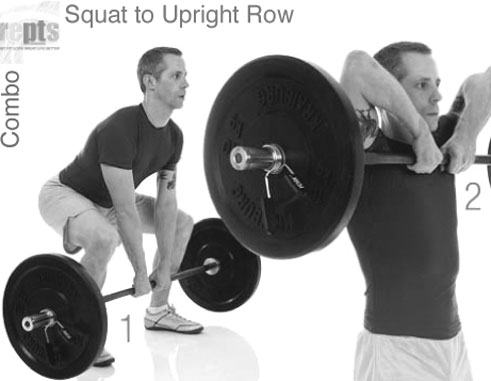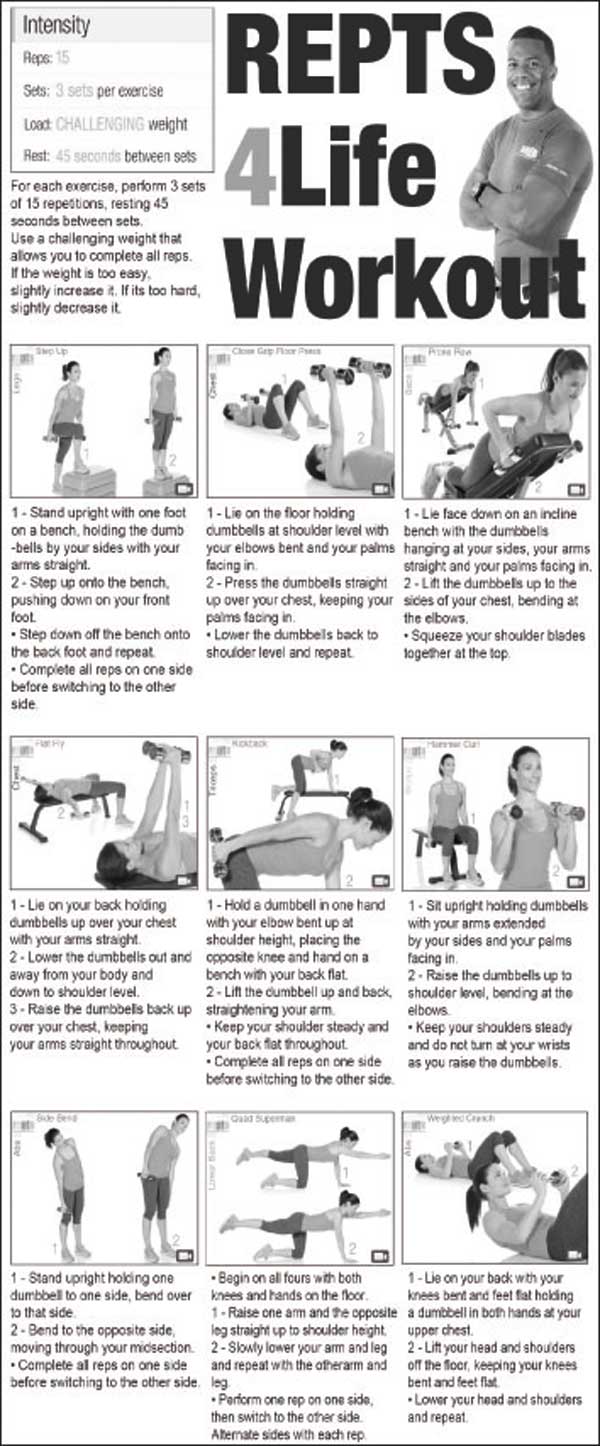This is another in a series of articles intended to expose our readers to pertinent information regarding their fitness efforts. It is produced mainly on the basis of research done by Rodriguez “Rodja” Constantine, who’s a Fitness Consultant, the owner of REPTS (Registered Exercise Professionals & Therapists) and co-producer and host of THE FIT FACTOR on Rhythm Fm (95.5).Rodja has over 20 years experience in the field.
Water Is Key To Life!
Humans can survive more than a month without food, but only a few days without water. Water is found inside and outside cells and circulates in the blood. Our body consists of about 60-65% of water; for a 150 pound person, this represents approximately 90 to 98 pounds of water.
Water plays many important roles in the body including:
Transportation
• Water transports glucose, oxygen, and fat to working muscles.
• Water transports waste products, such as carbon dioxide and lactic acid away from working muscles.
Body temperature regulation
• The body wants to keep a constant temperature of approximately 98.6ºF or 37ºC. If the body temperature increases to >106ºF or 41ºC, cells will die.
• Working muscles generate heat. In fact, the body can generate 20 times more heat when working, than when at rest.
• To prevent overheating, the body regulates temperature by sweating. Water absorbs heat from the working muscles and dissipates this heat to circulating blood and ultimately through the skin.
• Sweat evaporates from the skin, which cools it down. This cools down the blood and the rest of the body. More than 80% of metabolic heat is dissipated by sweat evaporation.
Urine
• Water transports and eliminates waste-products in the urine.
The darker the urine indicates a greater concentration of waste-products and less water — this indicates dehydration.
Vitamin/mineral supplementation can result in dark urine. Since supplements of individual vitamins or minerals (i.e. Vitamin C, selenium or chromium) may contain more than the body can absorb, they are excreted in the urine.
Digestion
• Water is an important component of saliva and gastric juices, which help digest food.
Lubrication
• Water is a good lubricator of joints, organs, and tissues.
Water comes from more than just fluids, it is a major component of many foods. In fact, it is estimated that 20% of our water needs are met through food, not fluids. Meal consumption is critical to ensure full hydration on a day to day basis. Eating food promotes fluid intake and retention.
Foods with high water content add volume but minimal calories to the diet. Thus, these foods high in water are known to promote a feeling of fullness. Fruits and vegetables are two food groups that have generally high water content. Even meat, bread, and dairy products contain some water.
Example of fruits and vegetables high in water include:
Fruit: watermelon, citrus fruits, grapes, apples, papaya, strawberries, apricots, cherries
Vegetables: carrots, bell peppers, lettuce, tomato, cucumber, squash, celery, broccoli, cauliflower, spinach
Athletes need to stay hydrated for optimal performance. Many athletes drink when they are thirsty and fail to hydrate before they become dehydrated. Thirst is a biological indicator of dehydration; however, dehydration has already occurred when an athlete becomes thirsty. Even a small drop in body fluids (1% of body weight, or 1.5 pounds in a 150 pound person) can impair performance.
Causes of dehydration
• Inadequate fluid intake
• Profuse sweating
• Failure to replace losses after exercise
•Exercising in hot weather, regardless of fluid consumption
• Relying on thirst to hydrate
Dehydration can lead to heat illness, which impacts physical performance. Signs of heat illness are:
• Headache, dizziness
• Nausea, vomiting
• Weakness, reduced performance
• Irritability
• Irrational behaviour
• Inability to concentrate
• fatigue
• muscle cramps
•confusion/ disorientation
Signs of dehydration and heat illness directly related to performance include reduced muscular strength and endurance.
Urine volume and colour are good indicators of hydration. A light coloured urine indicates adequate hydration. In addition, a larger volume of urine indicates better hydration. Since vitamin supplements can make the urine darker, volume may be the better indicator for those taking vitamin supplements.
Prevention
It is important to adequately hydrate before, during and after exercising to prevent dehydration. A number of factors will influence your fluid needs:
• altitude – fluid requirements are greater at high altitudes.
• climate – If the temperature is hot or humid you will need to consume more water.
• sweat rate – Sweat is the primary source of water loss during exercise. The difference in sweat rates between individuals makes it difficult to provide a ‘one size fits all’ recommendation. Individuals who sweat easily and in large quantities are at greater risk for dehydration. Women tend to have lower sweating rates than men (smaller body size and lower metabolic rate).
Body weight changes can reflect sweat losses during exercise and can be used to estimate individual fluid replacement needs for specific exercise and environmental conditions. It is recommended that individuals monitor body weight changes during training/competition sessions to estimate sweat loss during specific practice tasks and competitions with respect to varying weather conditions. Estimate your sweat rate per hour by weighing yourself before and after exercise.
To enhance fluid ingestion, consider the palatability of the fluid. Cool beverages (40-50 degrees Fahrenheit) with moderate amounts of sodium and/or sugar, in desirable flavours will promote fluid consumption. For more information visit the Eat To Compete information on fluid replacement beverages. (link to training diet page and if possible anchor to section at end about differentiating different types of drinks)
Before
Hydrating prior to exercise, an individual should slowly drink beverages approximately 1 ounce per 10 pounds of body weight at least four hours before the exercise task. Hydrating several hours prior to exercise allows sufficient time for urine output to return towards normal before starting an event. If this fluid consumption does not produce urine, or urine is dark, slowly drink additional beverage 1 ounce per 15 pounds of body weight about two hours before the event.
During
The goal of drinking during exercise is to prevent excessive dehydration (>2% body weight loss) and excessive changes in electrolyte balance. During practice/competition four to eight ounces of fluid should be consumed approximately every 15 minutes. While the primary intent is to prevent dehydration, consuming beverages with carbohydrate can be beneficial to sustain high-intensity exercise lasting one hour or more. Consuming carbohydrate during exercise at a rate of 30-60 gms has been shown to maintain blood glucose levels and sustain exercise performance. Drinking beverages with caffeine may also help sustain exercise of high-intensity. Previous concerns regarding a dehydrating effect of caffeine have not been observed with a moderate dose of caffeine (about 12 oz of coffee).
After exercise the goal is to fully replace any fluid and electrolyte deficit. How aggressively an individual rehydrates depends on the degree of dehydration and/or the length of time until the next bout of exercise. If the degree of dehydration is not severe and time permits, consumption of normal meals and snacks with sufficient volume of plain water will restore hydration status. For rapid and complete recovery from dehydration an individual should drink approximately three cups of fluid for every pound of body weight loss. Consuming sodium (in beverages or snack items) during the recovery period will help retain ingested fluids and stimulate thirst.
Join Rodja next week for another very informative article. In the meantime here’s aftness programme to help you shed unwanted pounds, trim excess body fat, and sculpt a lean body. Each week, the workouts will become progressively challenging to keep you motivated toward your fitness and weight loss goals. Each exercise should be performed in sequence with one day of rest in between and each should eventually be completed within 30 to 45 minutes. Personalized programmes are also available for a nominal fee. You may also contact Rodja) or visit our website at reptsfitness.com or our facebook page at faceboook.com/repts.fitness for more information and videos.
REPTS ( Registered Exercise Professionals & Therapists) is a Personal Training Studio located both in Castries and Rodney Bay. REPTS offers all inclusive upgradeable fitness packages (Personal and small Group Training, Body Analysis, Nutrition Counselling and Planning, FREE Gym Membership, Classes and etc.) for one affordable monthly fee. Rodja also designs long term fitness plans and short term workout routines for use at home, your current gym, or when travelling. Skype Training is also available for those who live abroad or travel too frequently to maintain a consistent training programme at home. Call 758-722-3763 to schedule an FREE consultation and trial session. Call for details.















